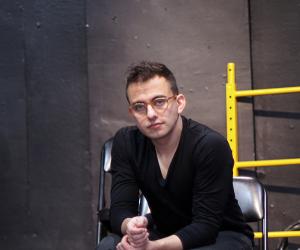Wael Morcos believes graphic design and typography can be used to preserve language.
Morcos looked at the ways in which this can be done in his talk at Design Indaba Conference 2013. .
Currently a graphic design student a the Rhode Island School of Design, Morcos is originally from Lebanon. In his native Lebanon he learnt to speak several languages without even realising it. This led to his fascination with language and all its diversity.
One of Morcos’s first projects saw him redesign his grandmother’s diary containing numerous poems. Using his own understanding of the world, he transformed the diary by creating typographic patterns resembling her needlework. “It was a very important project for me as it made me understand myself and see how language and type is able to connect two people,” says Morcos.
The belief that who you are is a result of your experiences is a key factor in Morcos’s work. His projects, subsequently, tent to look at how people are able to trace their memories through visual cues that can preserve one’s life in various ways.
"Objects are silent but typography has the ability to give a voice to them" he believes.
Morcos also spoke about his fascination with Arabic typography, as well as bilingual typography and the ability to balance two languages visually.
"Designing a typeface is like designing a tool that gives people the chance to appropriate something and re-contextualise it in ways a designer might not have thought of," says Morcos.
Lastly, he spoke about his collaboration with Andy Chen to design the Civilian Victims Annual report. Here the graphic designers found a way to use type to portray a trustworthy report while simultaneously expressing the people it represents.








